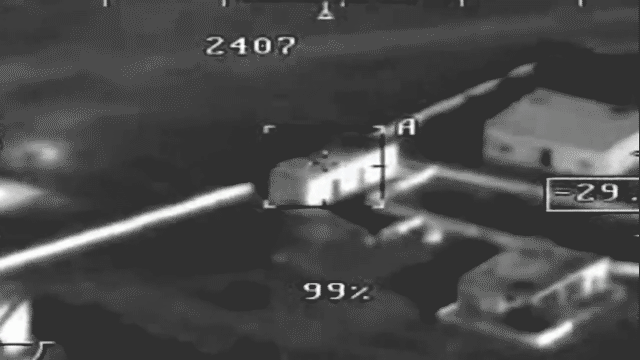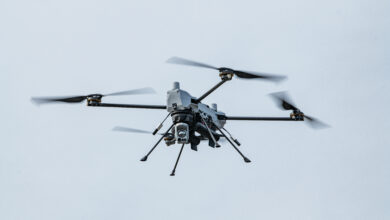Russia destroys drone factory and kills militants its says shelled Hmeimim air base
The Russian military destroyed a drone assembly facility and killed militants it said attacked its Hmeimim air base in Syria on December 31, according to reports.
The Ministry of Defence said Russian special operations forces established the location of militants who shelled the air base on the western edge of Idlib province, Tass reported. Two Russian personnel were killed in the December 31 attack.
“When the terrorists arrived at the facility where they were to board a minibus, the whole subversive group was eliminated by the Krasnopol high-precision munition,” the ministry said.
#SYRIA Command of the Russian force grouping in Syria held special operation aimed to search and eliminate a group of insurgents, who had attacked #Khmeimim airbase on December 31, 2017 pic.twitter.com/8zzBmNqoT9
— Минобороны России (@mod_russia) January 12, 2018
The 2K25 Krasnopol is a Russian 152 mm cannon-launched, fin-stabilized laser-guided munition that homes on a point typically illuminated by a ground-based operative. Krasnopol is fired mainly from self-propelled howitzers and is intended to engage small ground targets like tanks or strong-points, and can be used against both stationary and moving targets.
In a separate strike, a drone assembly and storage facility in Idlib was also targeted.
It is unclear when the strikes occurred.
“The Russian military reconnaissance has uncovered a terrorist fixed-wing drone assembly and storage place in the province of Idlib. The depot has been destroyed by the Krasnopol precision artillery munition,” the ministry said.
#SYRIA In #Idlib province, Russian military intelligence located the place of final assembly and storage of aircraft-type strike drones. Strike by #Krasnopol high-precision projectile destroyed the depot pic.twitter.com/7IpxeO9xEx
— Минобороны России (@mod_russia) January 12, 2018
The report does not confirm if the drones used in the January 6 drone attack on Russia’s Tartus naval base and Hmeimim air base.
Russia’s MoD said the attacks on the bases were thwarted, saying that three drones were forced to the ground outside the base, three others exploded when they touched the ground and seven were eliminated by Pantsir-S anti-aircraft missile systems.
Head of the Russian General Staff's Office for UAV Development Major General Alexander Novikov holds briefing for domestic and foreign reporters on strike #UAVs used for attack against Russian objects in #Syria https://t.co/Nbu8mIat6D pic.twitter.com/nBqJXHW4DP
— Минобороны России (@mod_russia) January 11, 2018
On Thursday, Major General Alexander Novikov, head of the Russian General Staff’s department for the development of unmanned aerial vehicles said drones captured would have required “special training, know-how in various scientific areas and practical experience” to build them, and that specialist software is needed to fly them.
Novikov further said that explosive in the 400-gram munitions the drone carried may have been made in Ukraine, and that they carried ball bearing to increase lethality.
“Preliminary analysis has shown that the main explosive used in the bombs was pentaerythritol tetranitrate (also known as PENT, PENTA or TEN), which has a far higher yield than hexogen. This explosive is manufactured in a number of countries, including Ukraine’s Shostka chemical agents plant. It cannot be made in makeshift conditions or extracted from other ammunition,” he said, adding that further tests were underway in an attempt to ascertain the country of origin.
More: Improvised drone expert Nick Waters published an in-depth analysis of the attacks on Bellingcat.











